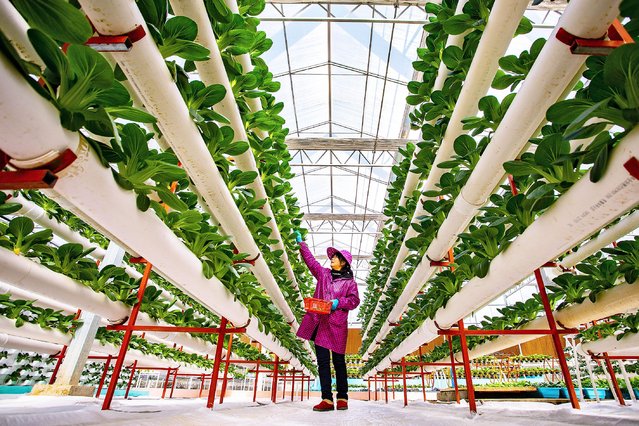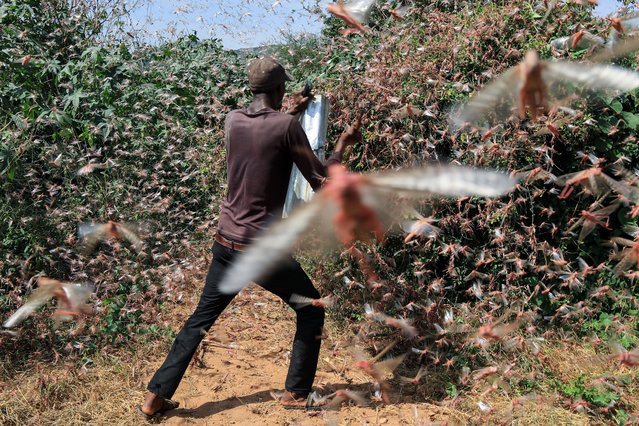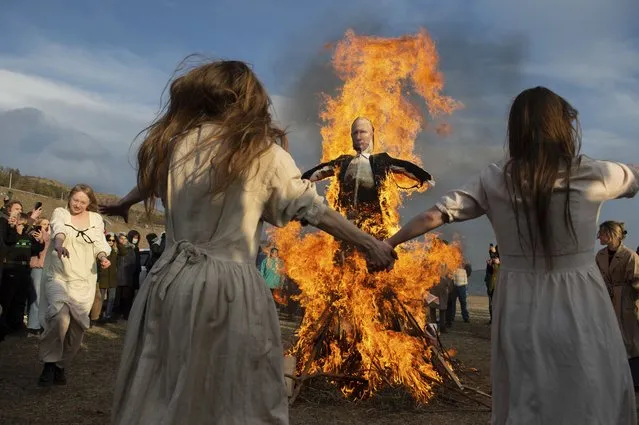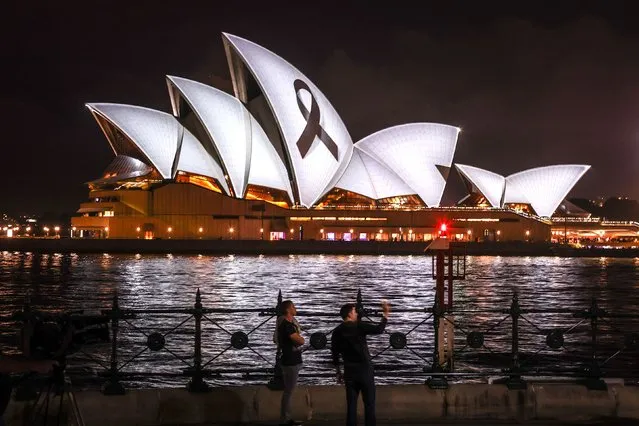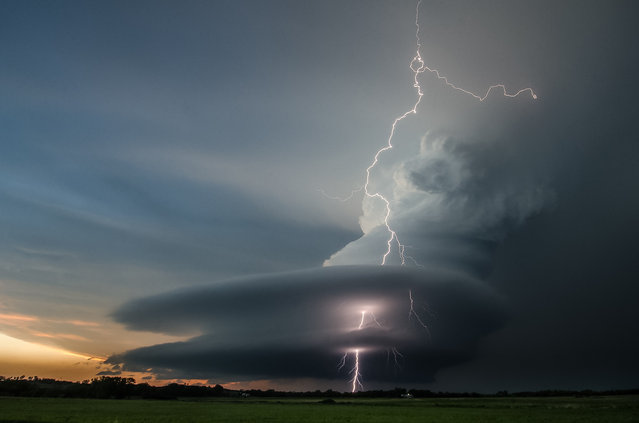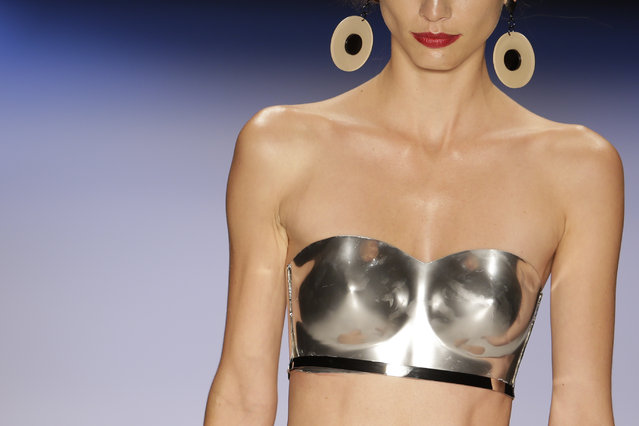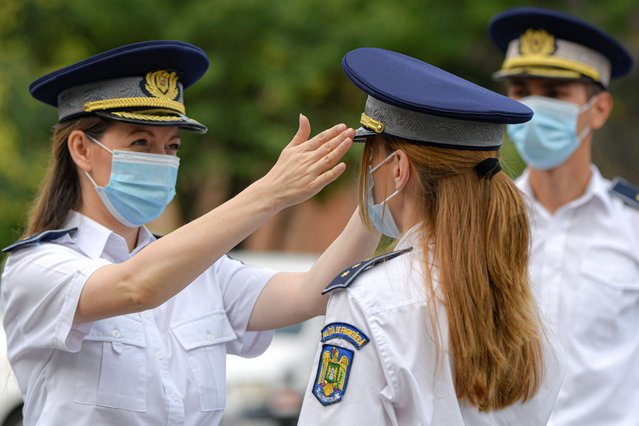
Border guard officers, wearing masks against COVID-19 infection adjust their outfits before a distinguished service awards ceremony for employees of the interior ministry in Bucharest, Romania, Thursday, July 16, 2020. Romania has registered on Thursday the highest number of COVID-19 infection cases since the pandemic reached the country in February, 777 in a 24 hours interval, as many fail to observe the mandatory protection measures, like the use of a face mask indoors or maintaining social distancing. (Photo by Andreea Alexandru/AP Photo)
18 Jul 2020 00:07:00,post received
0 comments

